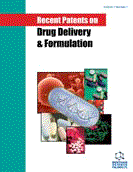Abstract
Cell encapsulation is an evolving branch of biotechnology with numerous applications including the enhancing of reproductive performance both in humans and other mammal species. Over the last twenty years male and female gametes and embryos have been encapsulated with or without somatic cells, for different purposes, such as semen controlled release, in vitro gametogenesis, embryo culture after in vitro fertilization and cell preservation. In this paper the state-of-the-art of this field (leaving aside that involving embryonic stem cells) is reviewed in terms of scientific literature and patent production. The patents and papers underline a widespread use of alginate which is a natural anionic, biocompatible, biodegradable polymer that mimics the extracellular matrix or the basal membrane and supports cell functions and metabolism. Gamete and embryo encapsulation techniques tend to fall into two main groupings: the “classical” three-step method, and the more recent one-step method. However, all of these encapsulation techniques are moving towards new, interesting applications since they can be easily tailor-made to fit a variety of cell lines.
Keywords: Microencapsulation, alginate, spermatozoa, oocyte, gamete, in vitro maturation, in vitro fertilization, threedimensional cell culture, Sertoli Cell, Leydig cell
 13
13














